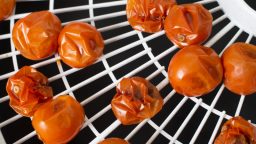As a homesteader, you know that it’s important to know how to preserve food. Very few of us live in a climate where we can grow food year-round. During the colder months, true self-sufficiency requires a working knowledge of food preservation methods.
That’s why we’ve put together a list of methods you can use to preserve food. Whether you’re looking for methods to preserve fruits and vegetables from your garden, items you’ve foraged, or animals that you’ve caught while hunting or fishing, we’ve got you covered.
Method #1: Canning
Canning is probably the most popular form of preserving food. It’s also one of the more expensive methods, but the initial investment can pay for itself rather quickly.
To can food, you’ll need a canner. You’ll also need to invest in a collection of glass jars, canning rings, and lids.
The benefit of canning food is that you can preserve it at its peak. Canning can be used to make jam, jelly, salsa, and other condiments.
Method #2: Fermentation
The next preservation method you may want to consider is fermentation. Fermentation involves preparing vegetables, placing them in brine, weighing them down, and allowing them time to ferment in an anaerobic environment.
The brine may contain salt, whey, or a fermentation starter. Some popular fermented recipes include sauerkraut, kimchi, and pickled vegetables.
Method #3: Dehydration
One method we really like is dehydration. It’s a favorite because it can be used to dry fruit, vegetables, meat, and fish – and you don’t need any special equipment to do it.
Of course, you can invest in a food dehydrator if you want. However, you don’t need to. Most foods can be dehydrated in a low oven. Simply marinate or season the food how you like. Then place it in a 150-degree oven for the specified time. For example, jerky takes eight to ten hours in the oven.
Drying foods in a food dehydrator may take less time than doing it in an oven. If you think you’ll be doing a lot of dehydration, it may make sense to buy a dehydrator. This is a time-consuming process, but dehydrated foods are shelf-stable – a big plus if you have limited refrigerator and freezer space.
Dehydrated foods can be stored in airtight bags, jars, or in the refrigerator to extend their shelf life. Some popular dehydrated foods include dried fruit, dried vegetables, and jerky.
Method #4: Freezing
Freezing food is a classic method of preserving it, but it has its limitations. If you’ve got a reliable source of power and a big freezer, all you’ll need is some plastic wrap and plastic bags and a permanent marker to label your food.
There are some downsides to consider. If you lose power for an extended period, you run the risk of losing any food that you have frozen. You shouldn’t have to worry about freezer burn if your food is properly wrapped before you freeze it, but it can be time-consuming to portion out food, wrap it, label it, and freeze it.
We like freezing for meat and fish. It can also be a great way to preserve delicate herbs from your garden. For example, we’ve made pesto with fresh basil and garlic and then frozen it in ice cube trays. That way, we have fresh pesto even in the middle of winter.
Method #5: Root Cellaring
In the days before refrigeration, storing hardy vegetables in a root cellar was the best way to keep them fresh over the winter.
Not all vegetables are suited to this preservation method. Some that are include potatoes, sweet potatoes, squash, cabbages, and apples.
If your home already has a cellar, you may be able to use it for storing produce over the winter. If not, consider digging a small cellar to ensure you have food to eat all year round.
Do you have a favorite food preservation tip that we haven’t mentioned? Share it in the comments!


